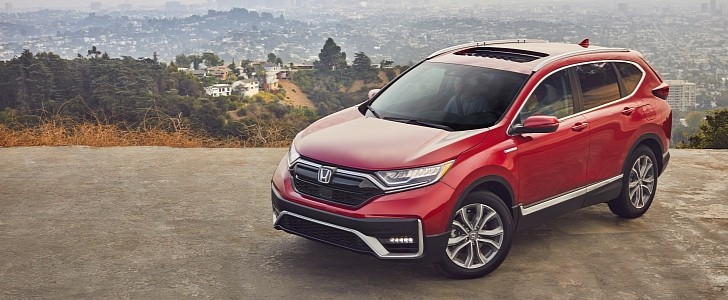The first Honda exported to the United States is called N600, also known as the 600 Sedan for the 1970 model year. Timing couldn’t have been better for the Japanese automaker because the Oil Crisis was looming on the horizon, sparking increased interest in fuel-efficient automobiles.
The Environmental Protection Agency, which was established by Richard Nixon in 1970, crowned the Civic as the most fuel-efficient vehicle in America in 1976. Subsequent reports have consistently shown Honda at the top of the list, and as the headline implies, the federal agency has recognized Honda as the most efficient full-line automaker for the 2019 model year.
According to the 2020 EPA Automotive Trends Report available as a PDF attachment below, the Japanese brand has averaged 28.9 miles per gallon (8.1 liters per 100 kilometers), which is four MPG better than the industry average. Honda also takes the cake in terms of carbon-dioxide emissions with 307 grams per every mile, bettering the industry average by 49 grams.
Next up, Hyundai ended the 2019 model year in the United States of America with a fleet average of 28.5 miles per gallon (8.25 liters per 100 kilometers) and 311 grams of carbon dioxide. Subaru finished in third place, and at the bottom of the list, domestic automakers are the biggest offenders.
Fiat Chrysler Automobiles is the least efficient of them all, followed by General Motors and the Ford Motor Company. The thing is, are you really surprised by this result? After all, the Detroit-based juggernauts are responsible for the most full-size trucks and SUVs sold in this part of the world.
Another takeaway from the report revolves around oomph and heft.
“Average horsepower continues to increase rapidly while weight is increasing slowly,” a combination that generally results in higher emissions and lower gas mileage. Technological advances have kept things under control so far, but emissions control systems and internal combustion can only go so far.
Tesla had by far the lowest tailpipe emissions and highest fuel economy thanks to an all-electric lineup, which is why full-line automakers such as Honda can’t afford to sit on the sidelines. The Safer Affordable Fuel-Efficient (SAFE) rule for model years 2021 through 2026 also needs to be mentioned.
In a nutshell, this piece of legislation sets rather feasible efficiency standards that increase 1.5 percent in stringency each year through 2026.
According to the 2020 EPA Automotive Trends Report available as a PDF attachment below, the Japanese brand has averaged 28.9 miles per gallon (8.1 liters per 100 kilometers), which is four MPG better than the industry average. Honda also takes the cake in terms of carbon-dioxide emissions with 307 grams per every mile, bettering the industry average by 49 grams.
Next up, Hyundai ended the 2019 model year in the United States of America with a fleet average of 28.5 miles per gallon (8.25 liters per 100 kilometers) and 311 grams of carbon dioxide. Subaru finished in third place, and at the bottom of the list, domestic automakers are the biggest offenders.
Fiat Chrysler Automobiles is the least efficient of them all, followed by General Motors and the Ford Motor Company. The thing is, are you really surprised by this result? After all, the Detroit-based juggernauts are responsible for the most full-size trucks and SUVs sold in this part of the world.
Another takeaway from the report revolves around oomph and heft.
“Average horsepower continues to increase rapidly while weight is increasing slowly,” a combination that generally results in higher emissions and lower gas mileage. Technological advances have kept things under control so far, but emissions control systems and internal combustion can only go so far.
Tesla had by far the lowest tailpipe emissions and highest fuel economy thanks to an all-electric lineup, which is why full-line automakers such as Honda can’t afford to sit on the sidelines. The Safer Affordable Fuel-Efficient (SAFE) rule for model years 2021 through 2026 also needs to be mentioned.
In a nutshell, this piece of legislation sets rather feasible efficiency standards that increase 1.5 percent in stringency each year through 2026.
















